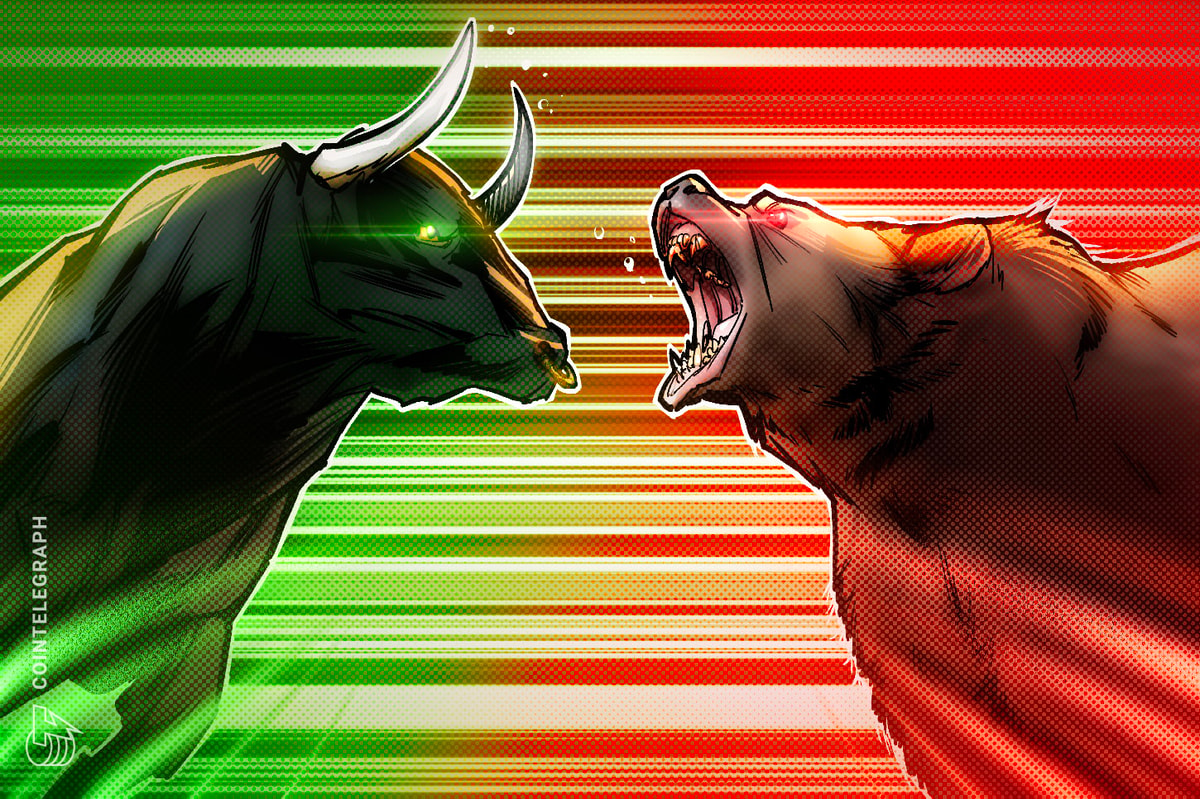TL;DR:Not sure if you’re in a bull or bear market? This guide breaks down how to spot the difference using price action, volume, sentiment and onchain
TL;DR:
Not sure if you’re in a bull or bear market? This guide breaks down how to spot the difference using price action, volume, sentiment and onchain data. Learn how to recognize market cycles, what signals to watch for and how to adjust your strategy for each phase so you can trade smarter.
Crypto markets can feel like emotional rollercoasters, prices soaring one month, then crashing the next. You’re not alone if you’ve ever wondered whether you are in a bull or a bear market.
In the simplest terms:
-
A bull market is when prices keep going up, people are excited and there’s a general sense that the future is bright. Think back to late 2020 and early 2021; Bitcoin (BTC) climbed from around $10,000 to nearly $70,000. New projects were launching daily and it felt like everyone from your cousin to your Uber driver was buying crypto.
-
On the flip side, a bear market is when prices drop consistently, investors pull back, and sentiment sours. A good example? 2022. After hitting all-time highs, the market tumbled. Bitcoin fell below $20,000, projects collapsed (remember Terra?), and even veteran traders started discussing “building in the bear.”
Knowing what kind of market you’re in helps you make smarter moves, and that’s why this all matters. You don’t want to ape into memecoins during a downtrend or panic-sell just before a rebound.
Recognizing market phases helps you invest more strategically, manage risk and crucially, keep your emotions in check. Which, in crypto, is half the battle.
Did you know? In 18th-century England, “bearskin jobbers” were early short-sellers, traders who sold bearskins they didn’t yet own, betting prices would fall. The saying “don’t sell the bear’s skin before you’ve caught the bear” stuck, and so did the metaphor. The term bull came later, not only as the bear’s opposite, but also because of the upward motion of a bull’s horns when attacking.
Understanding bull and bear markets
Sure, crypto is “numbers on a chart.” But, it’s also stories, headlines and entire communities’ constantly shifting mood. Here’s how to understand bull and bear cycles:
1. Bull market characteristics
a) Sustained price increases
Prices rise in a bull market, sure. What’s more important is that they keep rising, often over weeks or months. You’ll see major coins climbing steadily and altcoins riding the wave.
A textbook example? Bitcoin’s run in 2020–2021, where it jumped from ~$10,000 to $69,000. That rally had momentum, institutional backing (Tesla, Strategy, etc.), and serious retail FOMO.
Or Dogecoin’s meme-fueled sprint in early 2021, going from joke status to $0.45 thanks to Elon tweets and Reddit hype.
b) Positive investor sentiment
You’ll know sentiment is bullish when X feels euphoric, everyone’s calling for a BTC moonshot and new projects are launching daily with sky-high valuations. Money flows in fast, and even risky bets feel like obvious plays. That’s when you know that positive investor sentiment is in the air.
c) Favorable economic indicators
Bull runs often line up with low interest rates, easy access to credit and generally tech-friendly conditions. During the 2020 bull, for instance, pandemic-era stimulus checks and low borrowing costs gave retail and institutional investors more ammo to deploy into digital assets.
2. Bear market characteristics
a) Prolonged price declines
Bear markets will drag on until the cows come home. Prices fall, then fall some more, and every slight bounce is sold off. Think 2018’s “crypto winter,” when Bitcoin crashed from $20,000 to around $3,000.
Or 2022’s brutal downturn, when BTC dropped from $69,000 to under $20,000. That crash wasn’t really about price either; it was fuelled by implosions like Terra-Luna, Celsius and the FTX scandal. The dominoes just kept falling.
Bear markets tend to feel like the party’s over.
b) Negative investor sentiment
During bear phases, fear takes over. Headlines turn grim, social media goes quiet and even die-hard believers start questioning their convictions. Funding dries up, dev teams go silent and “exit liquidity” jokes make the rounds.
c) Adverse economic conditions
Macro headwinds don’t help. High interest rates, inflation fears or tightening monetary policy often make things worse. In 2022, for example, the Fed’s aggressive rate hikes made risk assets, including crypto, far less appealing.
Key indicators to identify market phases
While no single metric can give you 100% certainty, there are a handful of time-tested indicators that traders and analysts rely on. Let’s break down the indicators you can use, aside from the obvious one (price).
Trading volume
Volume tells you how much conviction is behind the price moves.
In a bull market, rising prices are often backed by strong trading volume. More buyers step in, more liquidity enters the market and the rally feels supported.
During a bear market, volume tends to dry up. Price drops are met with weak buying pressure…
cointelegraph.com
